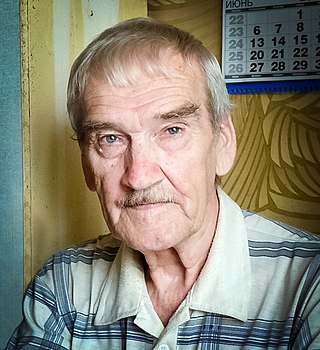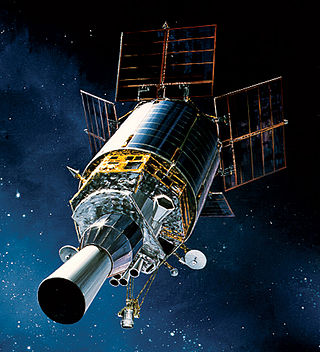
Nuclear warfare, also known as atomic warfare, is a military conflict or prepared political strategy that deploys nuclear weaponry. Nuclear weapons are weapons of mass destruction; in contrast to conventional warfare, nuclear warfare can produce destruction in a much shorter time and can have a long-lasting radiological result. A major nuclear exchange would likely have long-term effects, primarily from the fallout released, and could also lead to secondary effects, such as "nuclear winter", nuclear famine, and societal collapse. A global thermonuclear war with Cold War-era stockpiles, or even with the current smaller stockpiles, may lead to various scenarios including the extinction of the human species.

In nuclear strategy, a first strike or preemptive strike is a preemptive surprise attack employing overwhelming force. First strike capability is a country's ability to defeat another nuclear power by destroying its arsenal to the point where the attacking country can survive the weakened retaliation while the opposing side is left unable to continue war. The preferred methodology is to attack the opponent's strategic nuclear weapon facilities, command and control sites, and storage depots first. The strategy is called counterforce.

World War III, World War 3, WWIII, WW3, or the Third World War are the names given to a hypothetical global conflict subsequent to World War I and World War II. The term has been in use since as early as 1941. Some apply it loosely to limited or more minor conflicts such as the Cold War or the war on terror. In contrast, others assume that such a conflict would surpass prior world wars in both scope and destructive impact.

The RSD-10 Pioneer was an intermediate-range ballistic missile with a nuclear warhead, deployed by the Soviet Union from 1976 to 1988. It carried GRAU designation 15Ж45 (15Zh45). Its NATO reporting name was SS-20 Saber.
A false alarm, also called a nuisance alarm, is the deceptive or erroneous report of an emergency, causing unnecessary panic and/or bringing resources to a place where they are not needed. False alarms may occur with residential burglary alarms, smoke detectors, industrial alarms, and in signal detection theory. False alarms have the potential to divert emergency responders away from legitimate emergencies, which could ultimately lead to loss of life. In some cases, repeated false alarms in a certain area may cause occupants to develop alarm fatigue and to start ignoring most alarms, knowing that each time it will probably be false. Intentionally falsely activating alarms in businesses and schools can lead to serious disciplinary actions, and criminal penalties such as fines and jail time.
Able Archer 83 was a military exercise conducted by NATO that took place in November 1983. It simulated a period of heightened nuclear tensions between NATO and the Warsaw Pact, leading to concerns that it could have been mistaken for a real attack by the Soviet Union. The exercise is considered by some to be one of the closest moments the world came to nuclear war during the Cold War. It was the annual Able Archer exercise conducted in November 1983. The purpose of the exercise, like previous years, was to simulate a period of conflict escalation, culminating in the US military attaining a simulated DEFCON 1 coordinated nuclear attack. The five-day exercise, which involved NATO commands throughout Western Europe, was coordinated from the Supreme Headquarters Allied Powers Europe (SHAPE) headquarters in Casteau, Belgium.

In nuclear strategy, a retaliatory strike or second-strike capability is a country's assured ability to respond to a nuclear attack with powerful nuclear retaliation against the attacker. To have such an ability is considered vital in nuclear deterrence, as otherwise the other side might attempt to try to win a nuclear war in one massive first strike against its opponent's own nuclear forces.

Launch on warning (LOW), or fire on warning, is a strategy of nuclear weapon retaliation where a retaliatory strike is launched upon warning of enemy nuclear attack and while its missiles are still in the air, before detonation occurs. It gained recognition during the Cold War between the Soviet Union and the United States. With the invention of intercontinental ballistic missiles (ICBMs), launch on warning became an integral part of mutually-assured destruction (MAD) theory. US land-based missiles can reportedly be launched within 5 minutes of a presidential decision to do so and submarine-based missiles within 15 minutes.

The Cold War from 1979 to 1985 was a late phase of the Cold War marked by a sharp increase in hostility between the Soviet Union and the West. It arose from a strong denunciation of the Soviet invasion of Afghanistan in December 1979. With the election of Prime Minister Margaret Thatcher in 1979, and American President Ronald Reagan in 1980, a corresponding change in Western foreign policy approach toward the Soviet Union was marked by the rejection of détente in favor of the Reagan Doctrine policy of rollback, with the stated goal of dissolving Soviet influence in Soviet Bloc countries. During this time, the threat of nuclear war had reached new heights not seen since the Cuban Missile Crisis of 1962.
Operation RYAN was a Cold War military intelligence program run by the Soviet Union during the early 1980s when they believed the United States was planning for an imminent first strike attack. The name is an acronym for Raketno-Yadernoe Napadenie. The purpose of the operation was to collect intelligence on potential contingency plans of the Reagan administration to launch a nuclear first strike against the Soviet Union. The program was initiated in May 1981 by Yuri Andropov, then chairman of the KGB.
Dead Hand, also known as Perimeter, is a Cold War-era automatic nuclear weapons-control system that was constructed by the Soviet Union. The system remains in use in the post-Soviet Russian Federation. An example of fail-deadly and mutual assured destruction deterrence, it can automatically initiate the launch of the Russian intercontinental ballistic missiles (ICBMs) by sending a pre-entered highest-authority order from the General Staff of the Armed Forces, Strategic Missile Force Management to command posts and individual silos if a nuclear strike is detected by seismic, light, radioactivity, and pressure sensors even with the commanding elements fully destroyed. By most accounts, it is normally switched off and is supposed to be activated during times of crisis; however, as of 2009, it was said to remain fully functional and able to serve its purpose when needed.

The Norwegian rocket incident, also known as the Black Brant scare, occurred on January 25, 1995 when a team of Norwegian and American scientists launched a Black Brant XII four-stage sounding rocket from the Andøya Rocket Range off the northwestern coast of Norway. The rocket carried scientific equipment to study the aurora borealis over Svalbard, and flew on a high northbound trajectory, which included an air corridor that stretches from Minuteman III nuclear missile silos in North Dakota all the way to Moscow, the capital city of Russia. The rocket eventually reached an altitude of 1,453 kilometers (903 mi), resembling a US Navy submarine-launched Trident missile. Fearing a high-altitude nuclear attack that could blind Russian radar, Russian nuclear forces went on high alert, and the "nuclear briefcase" was taken to Russian President Boris Yeltsin, who then had to decide whether to launch a retaliatory nuclear strike against the United States. Russian observers determined that there was no nuclear attack and no retaliation was ordered.
In nuclear strategy, a counterforce target is one that has a military value, such as a launch silo for intercontinental ballistic missiles, an airbase at which nuclear-armed bombers are stationed, a homeport for ballistic missile submarines, or a command and control installation.

Stanislav Yevgrafovich Petrov was a lieutenant colonel of the Soviet Air Defence Forces who played a key role in the 1983 Soviet nuclear false alarm incident. On 26 September 1983, three weeks after the Soviet military had shot down Korean Air Lines Flight 007, Petrov was the duty officer at the command center for the Oko nuclear early-warning system when the system reported that a missile had been launched from the United States, followed by up to five more. Petrov judged the reports to be a false alarm.
Oko is a Russian missile defence early warning programme consisting of satellites in Molniya and geosynchronous orbits. Oko satellites are used to identify launches of ballistic missiles by detection of their engines' exhaust plume in infrared light, and complement other early warning facilities such as Voronezh, Daryal and Dnepr radars. The information provided by these sensors can be used for the A-135 anti-ballistic missile system which defends Moscow. The satellites are run by the Russian Aerospace Forces, and previously the Russian Aerospace Defence Forces and Russian Space Forces. Since November 2015, it is being replaced by the new EKS system.

The Man Who Saved the World is a 2013 feature-length Danish documentary film by filmmaker Peter Anthony about Stanislav Petrov, a former lieutenant colonel of the Soviet Air Defence Forces and his role in preventing the 1983 Soviet nuclear false alarm incident from leading to nuclear holocaust.

An early warning satellite is a satellite designed to rapidly detect ballistic missile launches and thus enable defensive military action. To do this, these satellites use infrared detectors that identify the missile thanks to the heat given off by its engines during the propulsion phase.

The Pershing II Weapon System was a solid-fueled two-stage medium-range ballistic missile designed and built by Martin Marietta to replace the Pershing 1a Field Artillery Missile System as the United States Army's primary nuclear-capable theater-level weapon. The U.S. Army replaced the Pershing 1a with the Pershing II Weapon System in 1983, while the German Air Force retained Pershing 1a until all Pershings were eliminated in 1991. The U.S. Army Missile Command (MICOM) managed the development and improvements, while the Field Artillery Branch deployed the systems and developed tactical doctrine.
Proud Prophet was a war game played by the United States that began on June 20, 1983, and was designed by Thomas Schelling. The simulation was played in real time during the Cold War. Proud Prophet was essentially played to test out various proposals and strategies, in response to the Soviet Union's military buildup. There were advocates for a number of strategies, which varied from demonstration nuclear attacks, limited nuclear war, and decapitation attacks. It was not possible for the United States to pursue each of these strategies. President Ronald Reagan and his administration were faced with the dilemma of figuring out how the United States should respond to the Soviet Union's large nuclear programs, while finding which strategy would be most effective.

A nuclear close call is an incident that might have led to at least one unintended nuclear detonation or explosion, but did not. These incidents typically involve a perceived imminent threat to a nuclear-armed country which could lead to retaliatory strikes against the perceived aggressor. The damage caused by international nuclear exchange is not necessarily limited to the participating countries, as the hypothesized rapid climate change associated with even small-scale regional nuclear war could threaten food production worldwide—a scenario known as nuclear famine. There have also been a number of accidents involving nuclear weapons, such as crashes of nuclear armed aircraft.











